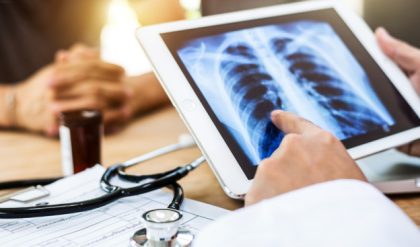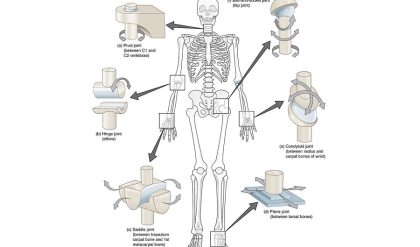The student understands the ionic basis of the spontaneous electrical activity of cardiac muscle cells:
![]() Describes how membrane potentials are created across semipermeable membranes by transmembrane ion concentration differences.
Describes how membrane potentials are created across semipermeable membranes by transmembrane ion concentration differences.
![]() Defines equilibrium potential and knows its normal value for potassium and sodium ions.
Defines equilibrium potential and knows its normal value for potassium and sodium ions.
![]() States how membrane potential reflects a membrane’s relative permeability to various ions.
States how membrane potential reflects a membrane’s relative permeability to various ions.
![]() Defines resting potential and action potential.
Defines resting potential and action potential.
![]() Describes the characteristics of “fast” and “slow” response action potentials.
Describes the characteristics of “fast” and “slow” response action potentials.
![]() Identifies the refractory periods of the cardiac cell electrical cycle.
Identifies the refractory periods of the cardiac cell electrical cycle.
![]() Defines threshold potential and describes the interaction between ion channel conditions and membrane potential during the depolarization phase of the action potential.
Defines threshold potential and describes the interaction between ion channel conditions and membrane potential during the depolarization phase of the action potential.
![]() Defines pacemaker potential and describes the basis for rhythmic electrical activity of cardiac cells.
Defines pacemaker potential and describes the basis for rhythmic electrical activity of cardiac cells.
![]() Lists the phases of the cardiac cell electrical cycle and states the membrane’s permeability alterations responsible for each phase.
Lists the phases of the cardiac cell electrical cycle and states the membrane’s permeability alterations responsible for each phase.
![]() Names the important ion channels involved in the permeability alterations during the various phases of the cardiac cycle.
Names the important ion channels involved in the permeability alterations during the various phases of the cardiac cycle.
The student knows the normal process of cardiac electrical excitation:
· Describes gap junctions and their role in cardiac excitation.
· Describes the normal pathway of action potential conduction through the heart.
· Indicates the timing at which various areas of the heart are electrically excited and identifies the characteristic action potential shapes and conduction velocities in each major part of the conduction system.
· States the relationship between electrical events of cardiac excitation and the P, QRS, and T waves, the PR and QT intervals, and the ST segment of the electrocardiogram.
The student understands the factors that control the heart rate and action potential conduction in the heart:
![]() States how diastolic potentials of pacemaker cells can be altered to produce changes in the heart rate.
States how diastolic potentials of pacemaker cells can be altered to produce changes in the heart rate.
![]() Describes how cardiac sympathetic and parasympathetic nerves alter the heart rate and conduction of cardiac action potentials.
Describes how cardiac sympathetic and parasympathetic nerves alter the heart rate and conduction of cardiac action potentials.
![]() Defines the terms chronotropic and dromotropic.
Defines the terms chronotropic and dromotropic.
The student understands the contractile processes of cardiac muscle cells:
- Lists the subcellular structures responsible for cardiac muscle cell contraction.
- Defines and describes the excitation–contraction process.
- Defines isometric, isotonic, and afterloaded contractions of the cardiac muscle.
- Identifies the influence of altered preload on the tension-producing and shortening capabilities of the cardiac muscle.
- Describes the influence of altered afterload on the shortening capabilities of the cardiac muscle.
- Defines the terms contractility and inotropic state and describes the influence of altered contractility on the tension-producing and shortening capabilities of the cardiac muscle.
- Describes the effect of altered sympathetic neural activity on the cardiac inotropic state.
- States the relationships between ventricular volume and muscle length, between intraventricular pressure and muscle tension and the law of Laplace.
Cardiac muscle cells are responsible for providing the power to drive blood through the circulatory system. Coordination of their activity depends on an electrical stimulus that is regularly initiated at an appropriate rate and reliably conducted through the entire heart. Mechanical pumping action depends on a robust contraction of the muscle.



